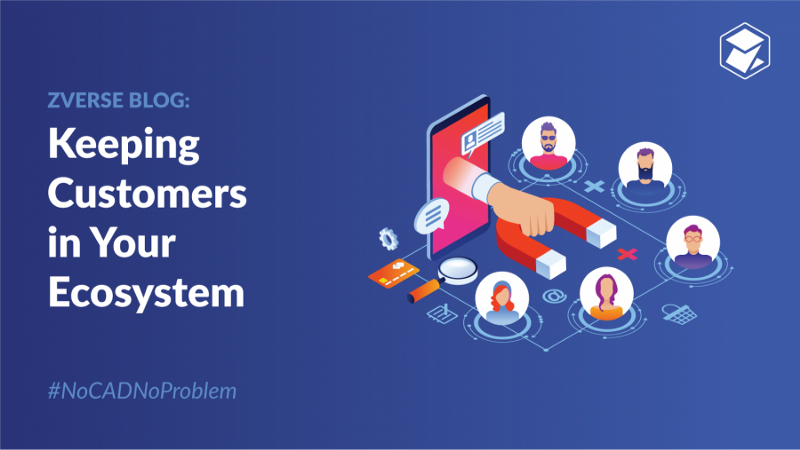ZVerse Blog | Keeping Customers in Your Ecosystem

A lot has been written in the last few years about customer experience, customer retention and the “ecosystem” of a company. But what does this mean exactly? And what steps can a company take to keep customers thriving within its ecosystem without defecting to a competitor?
One definition geared toward the tech industry describes an ecosystem as a “complex network of interconnected systems” — while the biological definition states that it is “a biological community of interacting organisms.” When looking at a company’s ecosystem in relation to customer experience and customer retention, both system connectedness and human interaction play necessary roles.
To keep customers coming back for the entire array of services and products offered, here are three key things to consider:
Understand Your Own Ecosystem
Every company has a unique culture that includes rituals, rules, legacy issues and procedures. Some elements of this culture affect company velocity in a positive way and some affect it negatively. Developing an honest assessment of the culture that looks at the whole operation holistically will allow a company to see the entire system from a high level. For example, if a company has a strong sales and service department but is weak in on-time delivery and logistics, an evaluation of the entire landscape as an organic whole will point to the cultural culprit to allow corrections to be made.
Define Specific and Focused Strategies
While this my sound like a statement of the obvious, companies often develop strategies too general and too generic to benefit customers. Vague initiatives declaring as a goal to be the “Industry Leader” add little to the success of retaining customers as every company is assumed to have this goal. Strategies aimed at specific and focused goal allow customer-centric campaigns and the development of new products and services that are innovative and adaptable.
Apple’s founder, Steve Jobs, set a strategic target for the company to become a consumer digital hub. Products were not predefined when the goal was set. Instead, they were built as interconnecting products and services in support of the goal and became crucial elements in Apple’s ecosystem. That ecosystem, and the value of a seamless digital hub for all its products, allowed them to build a strong base of customer loyalty and build products that kept them there.
Develop Partnerships
Partnerships can support a company ecosystem and can eventually be added to it to strengthen value perception and level areas with gaps.
Partnerships for internal assistance are especially important for small and medium sized companies with limited resources. By outsourcing areas such as Human Resources, IT and even some Finance functions, these small to medium businesses can focus fully on customer experience and retention.
External partnerships can include high level marketing companies for brand management. Brand management today is complex, and many companies lack resources to staff full time marketing.
For a clear example of how a company can utilize the above tactics to improve customer retention, let’s look at the Digital Manufacturing Industry. Digital manufacturers often struggle to keep leads inside their ecosystem because, often times, a lead needs specific 3D files in order to start a project. So if, say, an inventor with a patent drawing comes to a manufacturer, the manufacturer must push them outside of their ecosystem in order to acquire a manufacturable 3D file.
This issue became apparent to manufacturers like Xometry and 3D Systems, who needed to expand their offerings in order to increase customer retention. Rather than standing up an entire 3D Design department, they developed an external partnership with ZVerse, Inc. to offer 3D Design services, and in turn, keep their customers in orbit from ideation to production.
When considering customer retention tactics, every company is unique. It may take one, two, or a mix of multiple recommendations to keep more customers in orbit- all depending on the needs of the customer, as well as the company ecosystem as a whole.
ZVerse’s CAD as a Service (CADaaS) platform allows any level of user to get parts designed for manufacturing with ease. For beginners who have only drawings or sketches to those with just an idea and description, they can turn concepts into 3D printable files and 3D printed parts. The projects are matched with design expertise with cost quoted up front and the end user has control over the life of the project and can view the models prior to print. These solutions make ZVerse a valuable partner in the search for legacy parts.
Originally published at https://www.zverse.com on January 17, 2019.